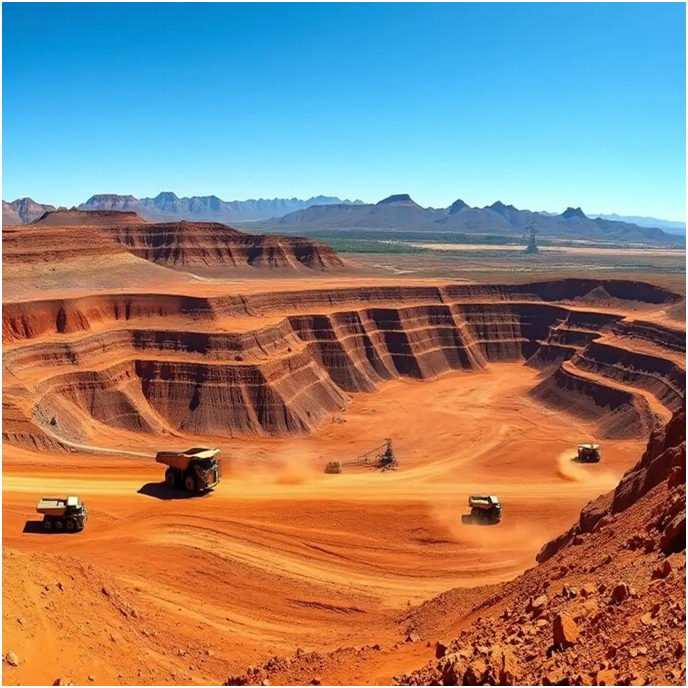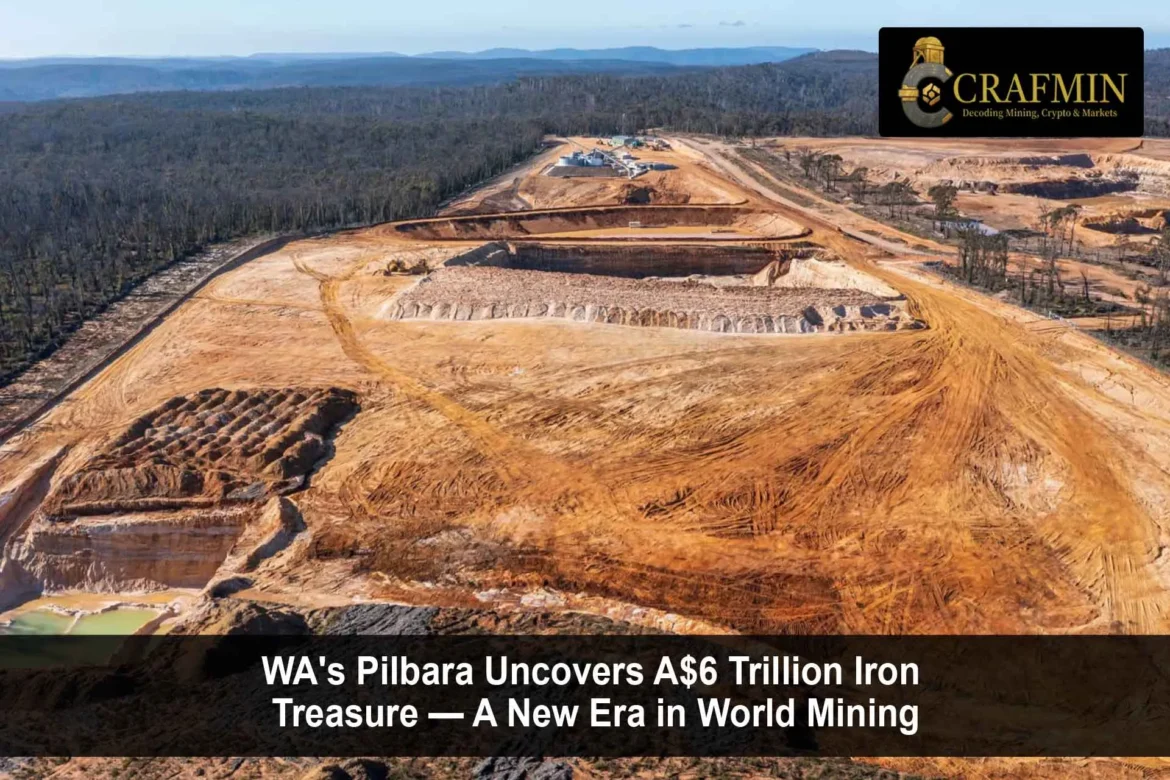
Aerial view of the Pilbara iron ore belt, soon to house one of the world’s richest deposits. Source: The Economic Times
Iron Wealth Buried Under the Dust
Hidden in the distant hills of Western Australia’s Pilbara region is a recently discovered iron ore reserve that has sent shockwaves through the global mining fraternity. At an estimated 55 billion tonnes, the reserve is not just huge—it’s staggering. With an estimated market value of more than A$6 trillion, the find puts Australia firmly on top of the world for important resources.
So great is this deposit, not merely in size, but quality. The grade of the iron ore is more than 60% Fe content, so it is Direct Shipping Ore (DSO). Lower processing, faster export readiness, and much better profit margins are the benefits. Most Pilbara mines today cluster at the 61% figure—this deposit not only does that, but does so on a wider belt.
A Look at the Figures:
- 55 billion tonnes: Size of estimated deposits
- A$6 trillion: Potential value of market
- 38%: Pilbara contribution to world seaborne iron ore trade
- 330 million tonnes/year: Postulated future national production potential
Australia is already the world leader in iron ore exportation, and this find is set to cement its supremacy for the next few decades at least. Experts are confident it can be maintained as a high-grade asset for over 60 years, a period far longer than anticipated.
From Ore to Opportunity: What’s at Stake
For Western Australia, this is a once-in-a-century opportunity. It’s not merely a matter of extracting ore—it’s a matter of developing economic muscle. New ports, extended rail corridors, upgraded haulage systems, and even downstream processing facilities are all in the pipeline.
Already, one of the proposed projects that will be constructed, the Hope Downs 2 extension, will create more than 950 permanent jobs and transfer A$2.5 billion to the local economy. Pilbara towns and communities will probably benefit from improved infrastructure, improved school quality, health care, and other small businesses.
Australia vs. the World: The Strategic Race for Iron
Whereas Simandou in Guinea is famous as a high-grade player with 65% Fe content, it is soiled by geopolitical uncertainty, logistics bottlenecks, and funding volatility. Australia’s strength is not only geology but also reliability, stability, and logistics.
China, India, Japan, and South Korea—long-time Australian iron ore clients—are observing this breakthrough keenly. They place strong value on access to reliable, consistent, high-grade feedstock to be able to pursue their future steel strategy. Australia secures its position as a resource strategic partner with this find.
Green Steel, Local Value Chains, and Innovation
View this post on Instagram
Australia has long supplied raw iron ore for export and finished steel for import. But the times they are a-changin’. This new reserve will be sufficient to provide the starting point for the green steel revolution, with electric and hydrogen smelting supplanting coal-based operations.
Projects such as WA’s NeoSmelt in Kwinana’s industrial precinct are already piloting low-emissions steel made from Australian ore. If successful, this would mark the start of local steel production, opening up new jobs and significantly decreasing carbon footprints.
In fact, a turn towards downstream processing could contribute an extra A$30 billion per annum to the Australian economy by 2035, mine industry analysts estimate.
Digging Deeper: A Geological Breakthrough
New geological studies show that although the Pilbara’s banded iron formations were created about 1.8 — 2 billion years ago, the mineralisation that resulted in the high iron content of the formations itself could have taken place between 1.4 and 1.1 billion years ago. This refinement in thought makes exploration geologists more capable of determining where they should find valuable deposits—toward Australia, but now throughout the entire world.
It is a scientific advantage that gives Australia an advantage to find the next big discovery ahead of rivals.
ESG Expectations: Sustainability and First Nations Partnership
No such project goes ahead today without consideration of sustainability and local participation. The state government and mining behemoths are expected to have robust Environmental, Social, and Governance (ESG) guidelines.
This covers:
Arrangements with Traditional Owners
Open royalties regimes
Water management processes
Biodiversity conservation corridors
Sustainability is not an afterthought anymore. It’s a big ask to secure investor confidence, regulatory stamps of approval, and public acceptance.
What Comes Next: Timelines & Milestones
| Year | Key Milestones |
| 2025 | Completion of feasibility studies and environmental assessments |
| 2026 | Community consultations, infrastructure planning, investment approvals |
| 2027 | Construction of haulage systems, early mining zones, camp setup |
| 2028 | Initial pilot production and overseas exports |
| 2029–2035 | Full-scale commercial operations and downstream processing rollout |
Why This Discovery Changes Everything
Australia has been the world’s steel-making input backbone for over a century. This find could make it the system’s brains, heart, and lungs as well.
Resilient supply chains: Assures world building and automotive industry future.
Economic stability: Supports state and national revenue sources over the long term.
Sovereign capacity: Ensures consistent onshore processing, breaks off from risky supply lines.
Green transition: Sparks clean steel, carbon decrease, and circular economy models.

